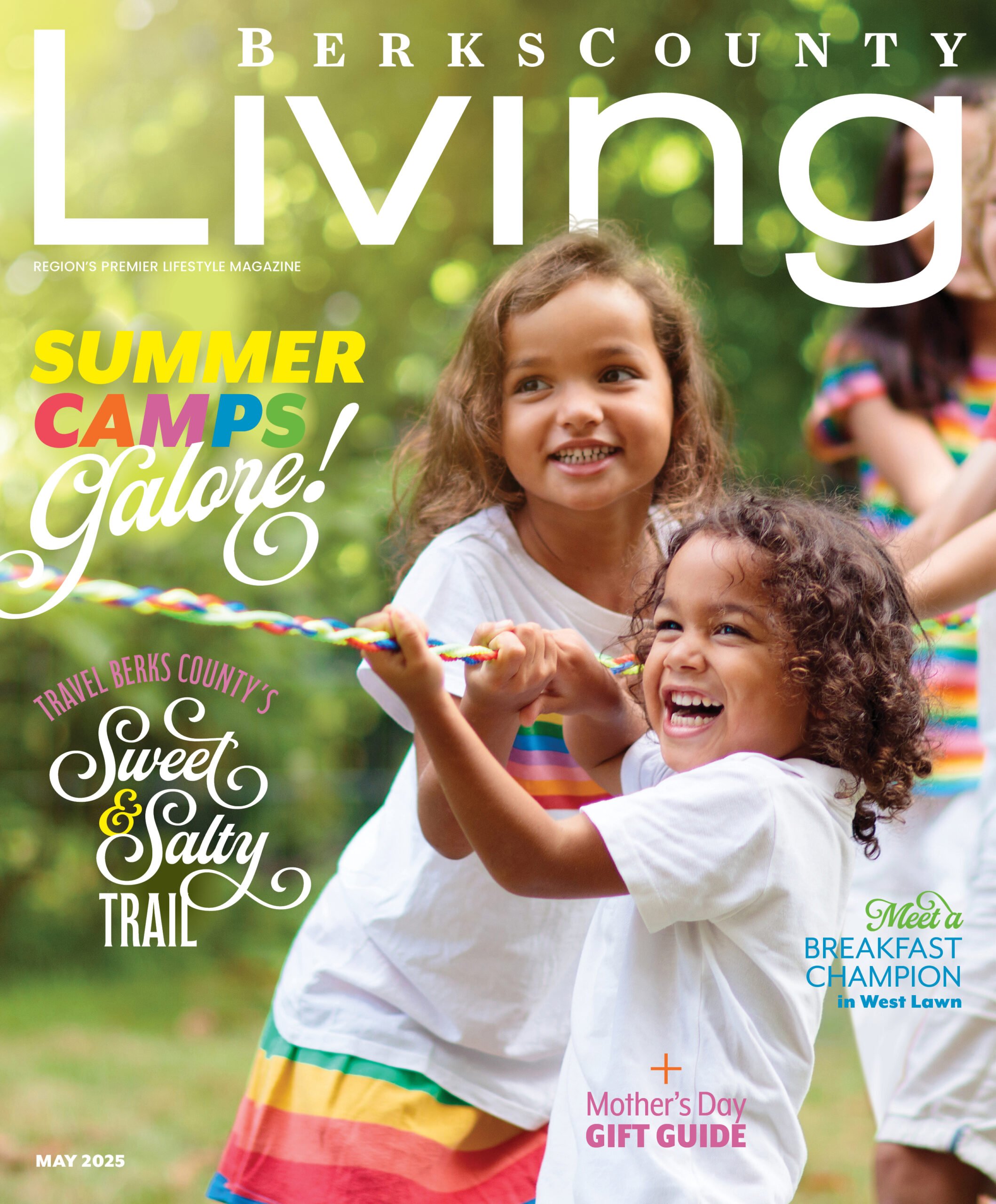A curious child can ask more than a dozen questions in a mere 60 seconds–and residents at The Heritage of Green Hills are eager to answer every single one of them during their mentor sessions at Lauer’s Park Elementary School in the Reading School District.
Three years ago, a group of residents from the senior living community established a mentor program with the school running from October through May. While their duties vary with each visit, residents always give love, care and respect and receive the same, plus more, in return.
“Every one of us who goes into that school comes out with a big smile on our faces because those kids are great,” says Kathy Wagner, a resident of The Heritage and a three-year mentor program volunteer. “The experience is uplifting.”
Twice a month, retired social worker Wagner and 14 to 16 fellow residents take a bus to the school and work with students one-on-one to help them read, write and do math; they also assist teachers with various classroom projects. Some residents drive themselves to the school to offer additional support, while a handful of others participate in a Pen Pal program to help students further develop writing skills.
“It’s gratifying to leave the school each time feeling that I’ve helped the kids to take a step in the right direction and expose them to new possibilities for a bright future,” shares The Heritage resident and mentor volunteer Dan Sherman.
An Intergenerational Partnership Begins
Lauer’s Park Principal Gordon Hoodak invited his long-time friend and The Heritage resident Cedric Jimerson, as well as other residents, to tour the school in 2009. Lauer’s Park is considered a “90/90/90” school, a term coined in 1995 to identify schools that show successful academic performance while having a significant number of poor and minority students.
Lauer’s Park prides itself on being different–in a good way. Hoodak has spent 36 of his 41years of teaching at Lauer’s Park and has been influential in transforming the school from a traditional learning environment to a unique and
empowering atmosphere for youth in downtown Reading. He says it’s all about “putting the right people in the right positions to make positive change.”
“Most visitors expect to see a city school that’s dirty and old and has graffiti,” Hoodak explains. Instead, visitors see colorful artwork adorning interior walls, cafes, art galleries with spotlights, learning stations and waterfalls. Outside, guests see native plant habitats, gardens, greenhouses, beehives, outdoor ponds and waterfalls, and a fitness track. Gone are the blackboards, dusty erasers and loud overhead projectors of yesteryear–replaced by clean whiteboards and sleek technology.
Visitors often liken Lauer’s Park to a hands-on children’s museum. “We provide kids with experiences they’ve never had before,” Hoodak says.
The tour made a big impression on the residents. Wagner says, “It was an eye-opener to see children in a center-city school. Families in the area are moving a lot, and some have a tough home life. We fell in love with the school, the students and the staff.”
Soon after their tour, inspired residents coordinated donation drives to collect school supplies and clothing but wished to offer more meaningful, hands-on support. Thus, the mentor program was born, thanks to the efforts of Jimerson, Wagner, resident Louise Greenberg, Cheryl Anderson (the Community Life Services Director at The Heritage) and Principal Hoodak.

“I think the school is so remarkable,” says Jimerson of why he wanted to support Lauer’s Park. “The school is giving the kids a great start in life, and I appreciate that. It’s an honor to be able to do something good over there.”
Jimerson is no stranger to helping others. He was the chairman of the Department of Surgery at the Reading Hospital for 37 years until his retirement. Jimerson has actively supported Lauer’s Park and the mentor program behind the scenes, but hopes to make a few personal visits this academic year.
Back-To-School Time
Residents are eager to begin this year’s mentor program. Wagner is looking forward to instructing second graders after working with kindergarteners two years ago and first graders last year. As in previous years, Wagner will help individual students with reading skills while building relationships.
“I like to make my time with the children more personal,” Wagner says. “I ask them about their family and pets or any other topics related to the book we’re reading. I can tell that our personal attention is very meaningful to them.”
For a second year, Sherman will assist third-grade teachers by filing paperwork, reviewing homework and interacting with children who are having a challenging day.
Sherman, a retired accountant, has countless fond memories of his time with the students, but his favorite one happened on his very first day last year. While sitting next to two third-grade boys who had gotten into trouble, Sherman told one of them that he couldn’t “pull a trick” that Sherman had never pulled as a child. Intrigued, the boy asked Sherman his age. Upon hearing “86,” the surprised, wide-eyed boy whispered it to another classmate. A “whisper-down-the-lane” game ensured, and soon the whole class knew Sherman’s age. One of the kids then asked Sherman how it had felt to ride a dinosaur as a child. “I said ‘kind of leathery,’ and I knew right then that I would enjoy myself here,” Sherman recalls.
A retired electrical engineer, resident David Morton took on a more active role with the school and volunteers weekly as a mentor to a fifth-grade boy. He spends about 90 minutes with his mentee each week, providing educational and emotional support and, most importantly, creating a personal connection.
Morton says of his previous two mentees, “They taught me to be compassionate. They were both enjoyable and a lot of fun.”
As a weekly visitor, Morton feels fortunate to have formed friendships with not only his mentees but also with the other classmates. “Every time I’d walk into the classroom, they’d say ‘Hi’ and give me high fives,” he says. “They were very courteous.”
During the academic year, Morton watches his mentee play sports after school, goes on outings with him and his teacher, and attends his fifth grade graduation ceremony. “We didn’t have graduation ceremonies for fifth graders when I was in school,” Morton laughs.
Resident Leigh Glenn drives herself to Lauer’s Park twice a month and works with the art teacher to cut papers, paste artwork, mount drawings and provide one-on-one instruction with students in first through third grades.
She raves about the school’s art curriculum. “I’ve never seen an art class as interesting and as productive,” says Glenn, an artist who owned a mural and faux finish business in New York City for 15 years before retiring. “The kids know major artists and their style of paintings. The school’s music and art program gives kids a sense of pride and self-confidence, and brings out their creativity.”
Every December, the Lauer’s Park chorus, comprised of up to 60 children, performs a holiday concert for residents at The Heritage. “The music program is fantastic,” Wagner boasts.
Amazing School, Students & Faculty
Amazing, appreciative, dedicated, loving and remarkable: residents speak these words often when describing the Lauer’s Park family. They commend the school for reinforcing positive behaviors and teaching good manners in addition to academic skills.
“Lauer’s Park is an exceptional school,” Glenn says. “I love the enthusiasm of the kids. The school sets such high standards, and the kids live up to them. They do it the ‘Lauer’s Park’ way–courteous and polite.”
A Win-Win Partnership
Everyone–from the students and faculty at Lauer’s Park to The Heritage residents and staff– has glowing remarks about the successful intergenerational collaboration.
As The Heritage’s Community Life Services Director, Anderson is always looking for activities that support the community’s health and wellness initiatives. “The mentor program is a great addition to our wellness initiative to help our residents live longer and be happier, and it provides an amazing opportunity with the intergenerational component,” she says. “The mentor program gives residents an opportunity to be around children. They’re like grandparents to the kids.”
Hoodak adds, “Our partnership with The Heritage provides value to both the students and the residents. For the kids, they get another adult who cares and who listens to them and talks to them. For adults, they get the love that comes back from a child.”
Hoodak appreciates the positive influence residents have on the students. He believes the residents are inspiring role models and have many life lessons to share about the importance of hard work and dedication in order to be successful.
Volunteers are quick to point out that the children are teaching them valuable lessons, too. “They taught me to appreciate what I have in life,” Wagner says. “Seeing the children overcome hurdles despite their different backgrounds is inspiring. It’s a fun and meaningful experience. That’s a pretty good combination.”
For residents, the first day back to school couldn’t come soon enough.
BY KANDACE WERTZ | PHOTOS BY MIKE NOBLE
















